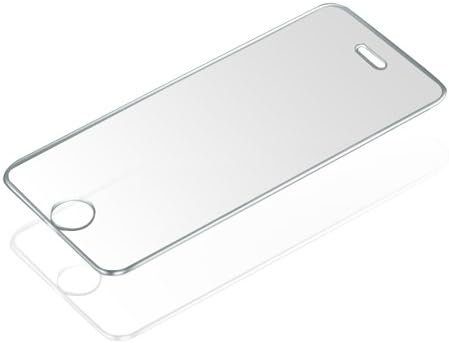Ultra-Thin Glass
In the semiconductor industry, ultra-thin glass is a key component that enables the development of faster and thinner devices. Its ability to bend and fold makes it ideal for various applications, such as flexible and foldable covers for smartphones and tablets.Our thin glass is electronic grade glass, divided into medium alumina glass and high alumina glass. Thicknesses are 0.33mm, 0.4mm, 0.55mm, 0.7mm, 0.82mm, 0.95mm, 1.1mm, 1.3mm, 1.15mm, 1.5mm, 1.6mm, 1.8mm, 2.0mm. Can be applied to mobile phone protective film, Mobile phone covers, industrial control panels, smart wearables, and car navigation.


Typical Applications of Ultra-Thin Glass
- Digital signage
- Anti-glare screen
- Virtual Reality
- Satellite solar
- PC and Notebook Cover Glass
- Mobile Electronics and Tablets
- Interactive/touch display
- Medical – Micro Slides
- Car
- Aviation
- Solar energy
- Photon
- Photo frame
Our Ultra-Thin Glass Performance Benefits:
1. High strength: It is not easy to break under heavy impact, and is 5-10 times stronger than ordinary glass.
2. Good explosion-proof performance: After tempering, it is not easily broken even if it is subject to strong impact, and will not cause harm to the human body.
3. Good heat resistance: 3-4 times that of ordinary glass, can withstand higher temperatures, and has strong cold resistance
Ultra-Thin Glass Specification
| Product name | Thickness | Size |
|---|---|---|
| Ultra-thin Glass | 0.33mm | 1245mm×1092mm |
| Ultra-thin Glass | 0.4mm | 1245mm×1092mm |
| Ultra-thin Glass | 0.55mm | 1245mm×1092mm |
| Ultra-thin Glass | 0.7mm | 1245mm×1092mm |
| Ultra-thin Glass | 0.82mm | 1245mm×1092mm |
| Ultra-thin Glass | 0.92mm | 1245mm×1092mm |
| Ultra-thin Glass | 1.1mm | 1245mm×1092mm |
| Ultra-thin Glass | 1.15mm | 1245mm×1092mm |
| Ultra-thin Glass | 1.3mm | 1245mm×1092mm |
GLASS COVER SLIPS
Electronic glass cover slips is a glass material used to protect electronic equipment. Our ultra-thin glass includes medium alumina glass and high alumina glass.
ITS MAIN FEATURES INCLUDE:
- Highly transparent: Electronic glass cover slips have high transparency, which can ensure the clarity of the display screen of electronic devices.
- Scratch-resistant and wear-resistant: The ultra-thin glass has a high surface hardness, which can effectively resist scratches and wear in daily use and protect the screen from damage.
- Explosion-proof performance: Electronic glass cover slips have good impact resistance. Even when it is subject to a large impact force, it can maintain its overall integrity and avoid breaking and hurting people.
- Oil-proof and anti-fingerprint: The electronic glass cover slips surface has an oil-proof and anti-fingerprint coating, which can reduce fingerprints and oil stains remaining on the glass surface and keep the screen clean.
- Thin, light and durable: The ultra-thin glassis thin and lightweight, which does not affect the overall portability of the device. At the same time, the glass material is durable and extends the service life of the equipment.
- High fit: ultra-thin glass has a good fit and can closely fit the surface of electronic equipment to prevent dust, water droplets, etc. from entering the inside of the equipment.
- Strong compatibility: Electronic glass cover slips is suitable for various types of electronic devices, such as smartphones, tablets, notebooks, etc.
To sum up, ultra-thin glass has the characteristics of being highly transparent, scratch-resistant and wear-resistant, explosion-proof, oil-proof and fingerprint-proof, light and durable, high fit, and strong compatibility, and provides good protection for electronic equipment.
MEDIUM ALUMINA GLASS
HIGH ALUMINA GLASS
Medium alumina glass and high alumina glass are manufactured through special melting and processing processes.
- Medium alumina glass refers to a glass that adds a certain proportion of aluminum oxide (Al2O3) to the glass raw material. The addition of aluminum oxide can improve the hardness, strength and wear resistance of the glass, while lowering the melting temperature of the glass, making it easier to shape during processing. Chalco glass is widely used in construction, furniture, automobiles, electronics and other fields.
- High alumina glass refers to glass with a higher aluminum oxide content. Compared with medium alumina glass, high alumina glass has higher hardness, strength and wear resistance, and also has good high temperature resistance. High-aluminum glass is usually used in the manufacture of high-end optical lenses, high-temperature experimental equipment, aerospace and other fields.
The manufacturing process for both types of glass is roughly the same and mainly includes the following steps.
MANUFACTURING STEPS:
- Ingredients: Mix quartz sand, soda ash, limestone and other raw materials with aluminum oxide according to a certain ratio.
- Melting: Put the mixed raw materials into a high-temperature furnace and melt them into molten glass. The temperature of the furnace is generally around 1500-1600 degrees Celsius.
- Molding: Pour molten glass into a mold and form a flat glass of a certain thickness through cooling and solidification.
- Annealing: In order to eliminate the stress inside the glass and improve its stability, it needs to be annealed in a low temperature environment.
- Cutting and polishing: According to the needs, flat glass is cut and polished to achieve the required size and smoothness.
Inspection: Conduct quality inspection on the processed glass to ensure that its performance meets the requirements.
In short, medium-aluminum glass and high-aluminum glass are manufactured through special melting and processing processes and have excellent performance and wide application prospects.
ELECTRONIC GLASS COVERSLIPS
Electronic glass coverslips is highly transparent, scratch-resistant and wear-resistant, explosion-proof, oil-proof and fingerprint-proof. It is light, thin, durable, highly fitting, and has strong compatibility, providing good protection for electronic devices.
Electronic glass cover slips is manufactured through physical and chemical processing processes.
MANUFACTURING STEPS:
- First, the pure glass raw material is melted using the float or calendering method to form a uniform glass liquid.
- Then, the glass liquid is poured into the mold, allowing it to cool and solidify into flat glass of a certain thickness.
- Next, the flat glass is subjected to surface treatment, such as cleaning, polishing, coating, etc., to improve its wear resistance, explosion-proof, oil-proof and other properties.
In the manufacturing process of electronic equipment, ultra-thin glass is usually used to protect key components such as display screens and touch panels. Due to its excellent performance, electronic glass cover slips has been widely used in smartphones, tablets, laptops and other fields.
